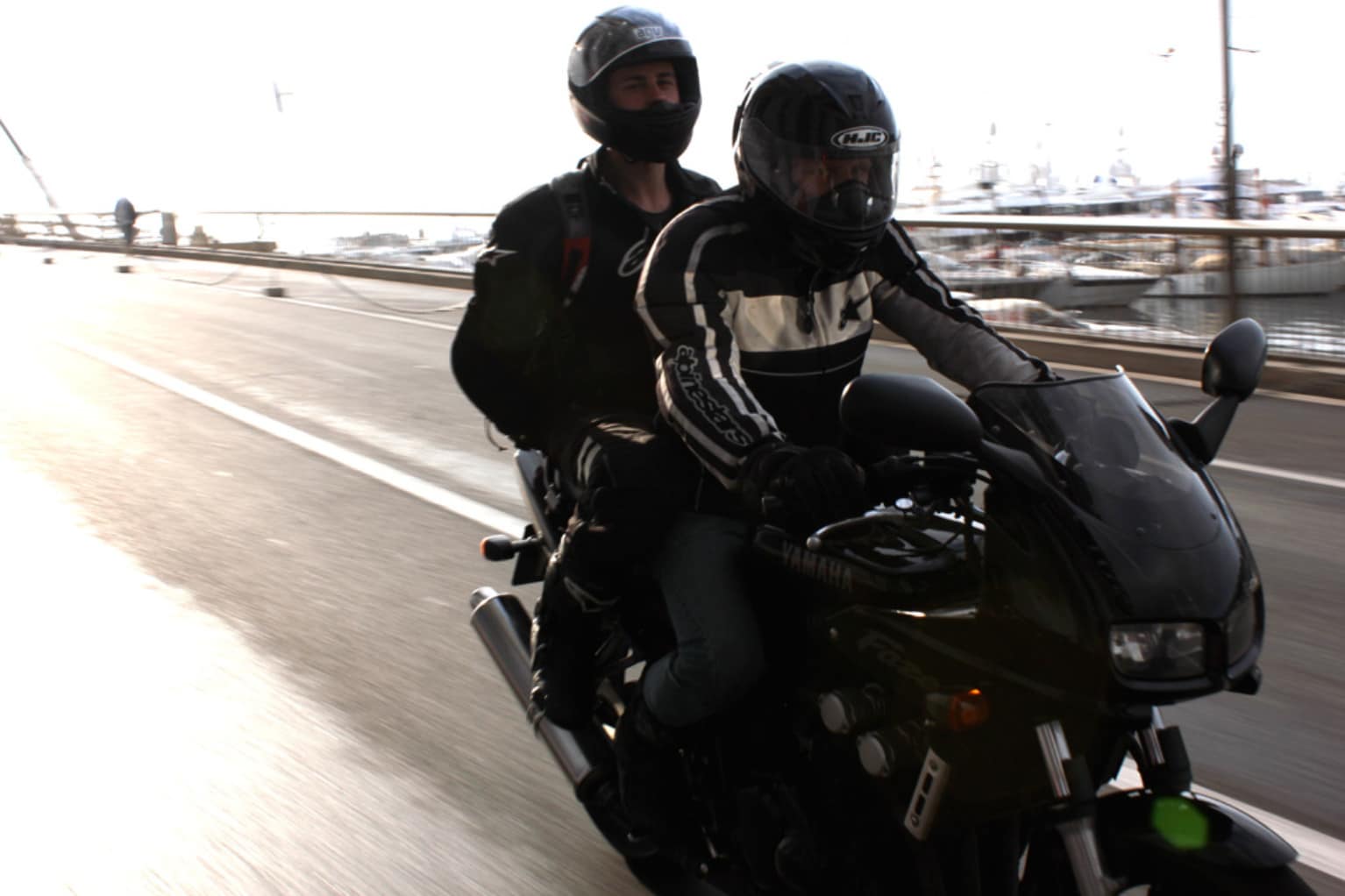Riding with a pillion can be a scary thought for a new rider, and even worse for a pillion that’s never been on a bike before.
The good news is, it’s not as hard as you might think thanks to forces of nature and good bike design! What’s more, by following these instructions, you’ll hardly notice that you’ve got a pillion on the back after a while.
The brief
Give your pillion to-be a thorough brief before getting geared up and on the motorcycle.
They must only get on and off the motorcycle when you indicate that you are ready. This includes keeping their feet on the pegs and upright on the saddle even when the bike is at a stop.
Agree a clear signal that can be under stood with your helmets on. Personally, I nudge my head to the left twice and give a big shout of “OK!” while keeping both hands on the handlebars, front brake on and both feet planted to the floor.
Tell them not to lean like a MotoGP rider into corners, and certainly not lean against you. They don’t have to lean at all at first, but once you and them build confidence, try to get them to follow your body position.
Show them the handrails, if they have them, or where on you or your jacket they can hold onto securely.
Your pillion must never reposition their body or shuffle around when you are slowing down to a stop. It can be very unsettling and cause a drop, which they might not be aware of.
Also remember to tell them the basics for if something goes wrong, such as not removing a motorcyclists helmet in the event of an accident.
Saving the bike from a drop is also near impossible with the weight of a pillion. If it’s going down, don’t try anything brash that might risk getting a foot caught beneath the bike. Easier said than done, we know, when it’s your pride and joy.
The set up
Riding with a pillion can affect the way your bike operates in a number of ways. Not only will the increased weight work the engine harder, but it’s also changing the demands on the suspension, brakes and headlight levels, amongst other things.
Within your motorcycle manufacturers manual, it is likely to include advice on setting that bike up specifically for riding with a pillion. This may include instructions on how to add preload to the rear shock and how to adjust damping and rebound.
Another factor to consider is your chain tension, which may need to be re set. Our innovative and handy tool, Chain Monkey will ensure that your tension will be set correctly first time every time.
Tyre pressures also need to be considered; again consult your manual.
The test
Get on and off the bike with your pillion a couple of times before starting the bike.
Show them how to open their visor with their gloves on and how to do up and undo their helmet.
Show them where there hands must be once on the bike – it’s important to practice this with gloves on.
Make sure their feet and legs are nowhere near the exhaust. They must never get on and off the bike on the side of the exhaust, if it has a single side. I’ve seen many a pillion put their foot straight onto the exhaust rather than the peg and shout that they are ready to go. No one wants a melted boot on their exhaust…or worse.
Riding style
It goes without saying that you should take it easy at first. Always try to be smooth on the clutch, the brakes and the accelerator as each of these can contribute to a nice big head-butt from your pillion into the back of your helmet.
Remember, they don’t have a clear view of what is up ahead and nothing else to slide into other than you.
I often tell my pillions to try to push against the tank in an emergency stop situation.
The additional weight provided by your pillion over the rear wheel will help your rear brake be more effective, so take advantage of it and use around 60% front, 40% rear brake when coming to a stop in normal conditions.
Remember
Never skimp on the gear you give your pillion. If all you have is a spare helmet, it’s not enough.
Did you know?
It is legal in many countries, including the UK and many in Europe, for a pillion to ride a motorcycle facing backwards!
The rules are that the passenger must sit astride the cycle on a proper seat fitted behind the riders seat, with proper footrests.
Of course, it’s not entirely sensible and it’s certainly a rare sight, other than for marathon and Tour De France press/broadcasting teams.
We took advantage of this technicality on a visit to Monaco in order to get some decent photos:




